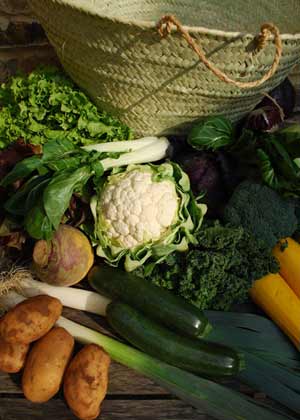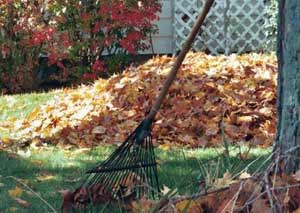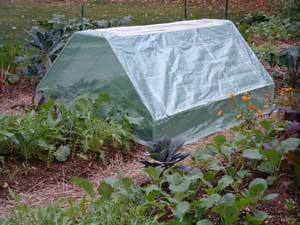October tips for your French garden


How to cope with the Indian summer
Indian Summers, do we really have them here in the Limousin? The short answer is that we will have to wait and see.
Sadly, with Indian summers there is a price to pay. The price is normally that the weather and temperatures will change (in severe cases) overnight, with little or no warning.
Basically, keep a very sharp and keen eye on the weather this month. Have your blankets, cardboard boxes and plant fleeces to hand and if you suspect a frost, cover them.
If your annuals are still doing well, be prepared to bring the pots and tubs in at night if you can. Any protection at all will help them last just a little longer. Consider sitting the pot/tub on a piece of polystyrene or cardboard to protect the root system from underneath.
Alright, all safety systems are in place, now what needs to be done in October?
Planting
 If you haven’t already, plant or if you have, continue planting your cool-season vegetables. As mentioned last month beetroot, cauliflower, cabbage, Brussels sprouts, broccoli, chives, celery, onions, parsley, parsnips, peas, radish, spinach, lettuce, turnips, and Swiss chard are to name but a few.
If you haven’t already, plant or if you have, continue planting your cool-season vegetables. As mentioned last month beetroot, cauliflower, cabbage, Brussels sprouts, broccoli, chives, celery, onions, parsley, parsnips, peas, radish, spinach, lettuce, turnips, and Swiss chard are to name but a few.
If you are planting garlic. Plant in a rich well drained soil, when you are planting normal sized garlic and cover with 2 inches (5 cm) of soil. Use 4 to 6 inches (10-15 cm) of soil if planting the larger or elephant types of garlic.
Continue planting cool season annuals, pansy, viola, snapdragon, stock, calendula and poppies. If you are feeling adventurous and want to test your gardening skills, you may want to try planting, cineraria, nemesia, and clianthus. These plants prefer planting in a cool and temperate climate, so do watch them closely, if you decide to plant them.
If you have a space in your garden and you are unsure of what to plant, make a note of plants displaying outstanding autumn colours as you drive along local streets and the
surrounding countryside. You may wish to incorporate some of them into your own landscape either this year or preferably next.
Now, if the tree surgeon is on their way to your garden, you may want to take some cuttings, or, kindly ask him or her if they can show you how to prepare a tree cutting for planting, if you don’t know how to do it. Ask them what they would do to promote the cuttings growth. Though one thing you may want to try is the cold frame and store them over the winter.
Also consider the cold frame for other cuttings such as shrubs and perennial seedlings started in mid- to late summer.
Bulbs already prepared for forcing can also be stored in cold frames until its time to take them indoors.
Continue to set out your spring flowering bulbs such as daffodils, Dutch iris, freesia, anemone, oxalis, watsonia, hyacinth, crocus, tulips and ranunculus.
And on the subject of ranunculus October is the time to plant them. Set tubers “feet first” about 2 inches (5 cm) deep into the soil and 6 to 8 inches (15-20 cm) apart. Water in deeply. Don’t water again, unless it gets hot and dry, until green growth starts to show in usually one to two weeks, though, with the weather being all over the place, do keep an eye on them as with all your new plantings.
[mrb]
Maintenance
 Feed your new flower and vegetable plants with liquid fertilizer two weeks after planting them.
Feed your new flower and vegetable plants with liquid fertilizer two weeks after planting them.
Continue to pick up fallen decomposing fruit that could harbour insects and pests, remember, put them in the bin.
Dig up divide and re-plant overcrowded perennials that have finished flowering such as Daylily, agapanthus, penstemon, yarrow, coreopsis, alstromeria, Shasta daisy and lamb’s ears.
The leaves at this moment are turning to those beautiful colours that only nature can produce. Make the most of the show as they will soon be on your garden.
When they start to invade the lawn, get them up as soon as possible and remember it’s a lot easier if they are dry.
The damage they can do is immense to a lawn so a trick you may want to employ (if you don’t already) is to go over them with your lawn mower. This method is also good for preparing the leaves for your compost heap or better still, next years mulch. Do not try to ’mow’ a huge wet pile of leaves as it will only damage your mower, rake them to a thin covering, then see how it goes. Remember, by getting the leaves up early you are also eliminating slug and snail habitats.
As you know autumn is a great time for moving plants.
Transplant your deciduous trees and shrubs when they are dormant. However, evergreen trees or shrubs may be transplanted earlier in the autumn and before they go dormant.
 You may want to water evergreens thoroughly before the ground freezes. Evergreens continue to lose water by transpiring during the winter, but, when the ground is frozen they cannot replenish the water they sometimes need to survive.
You may want to water evergreens thoroughly before the ground freezes. Evergreens continue to lose water by transpiring during the winter, but, when the ground is frozen they cannot replenish the water they sometimes need to survive.
Bring in your cannas, dahlias and gladioli if they are not hardy in your area, do it after the tops have been browned by frost. Then allow them to dry, clean off residual soil and store them in a peat moss or vermiculite, in a cool location free from frost.
Cut down stems and foliage of herbaceous perennials when the leaves begin to brown.
With your lawn, continue cutting and get a fertilizer into it, to help it over winter if not yet done, though, with the way the weather is, you may have to consider re-seeding certain bald patches once again and ‘All leaves must be kept off the grass‘.
Beds, boarders and vegetable patches
(First and foremost get as much organic fertiliser in as you can before planting. Remember that a late-autumn tilling can help to control a whole host of insects, this is because it exposes over wintering insects to winter conditions. It also makes spring soil preparation easier. Also remember to check if your soil needs lime to reduce the acidity in it
Mulches applied too early can do more harm than good.
A mulch is used to keep soil temperatures constant and prevent frost heaving (not keep it warm). Therefore, it is best not to mulch until the soil temperature has reached freezing point.
House plants
 A house plant growth slows as the days get shorter and light intensity is reduced. This means that they will need less frequent watering and fertilizing until next spring. Too much of either in the winter months can cause weak growth.
A house plant growth slows as the days get shorter and light intensity is reduced. This means that they will need less frequent watering and fertilizing until next spring. Too much of either in the winter months can cause weak growth.
Water with rain water that has been left inside (preferably in the same room as the plant) so as not to give it a freezing shock to its system.
Cacti and other succulents, such as jade plants and sedums, do best in a sunny south or west window during the winter. They can tolerate cool temperatures, but you may want to move more-tender foliage plants away from cold windows.
Tools
 When autumn does arrive, get your tools cleaned and sharpened. Prior to storage oil well.
When autumn does arrive, get your tools cleaned and sharpened. Prior to storage oil well.
Also, keep a look out for bargains, the demand for tools at this time of year slows considerably and with the current financial crisis, you never know, even in France there may well be bargains to be had.
A final note, hopefully autumn will arrive this month, if it doesn’t, next month you may want to read the tips for April of this year.
Bon Courage everybody!
•With thanks to Mark from Oak Garden Services in the Limousin
Share to: Facebook Twitter LinkedIn Email
More in countryside, garden, limousin, Removals, summer
By FrenchEntrée
Leave a reply
Your email address will not be published. Required fields are marked *



